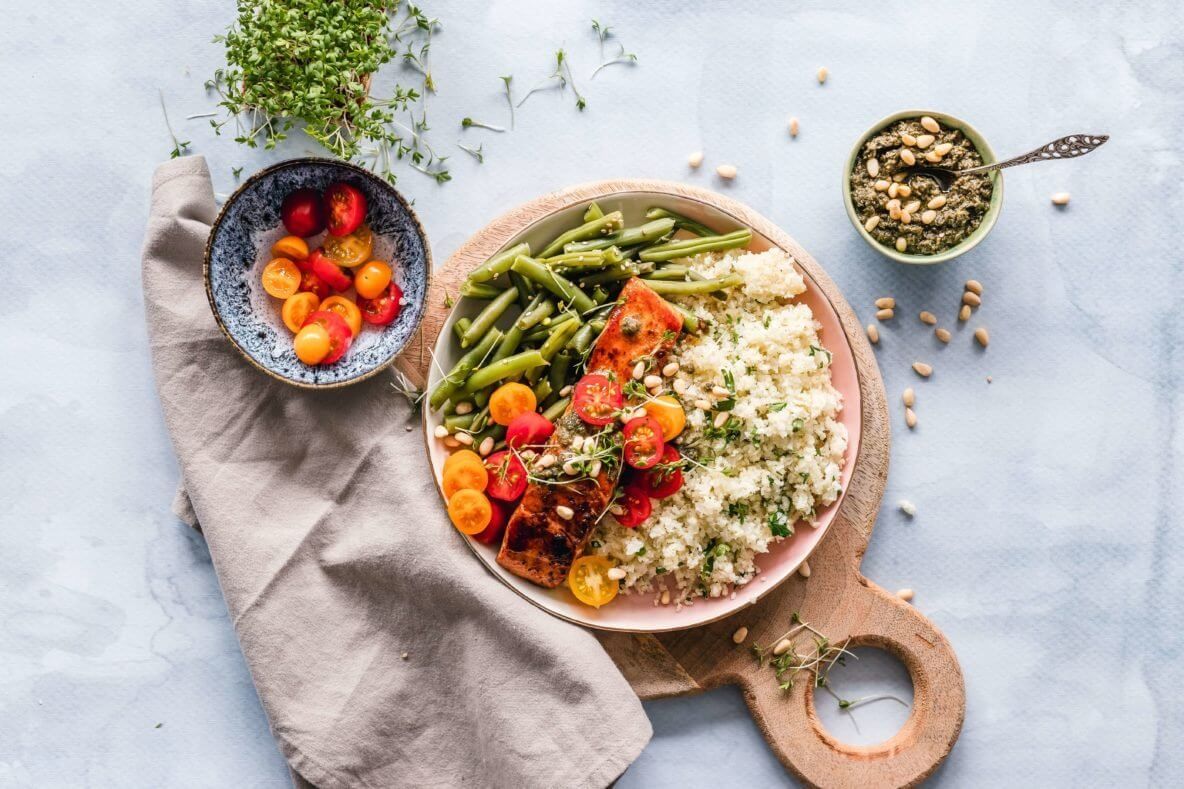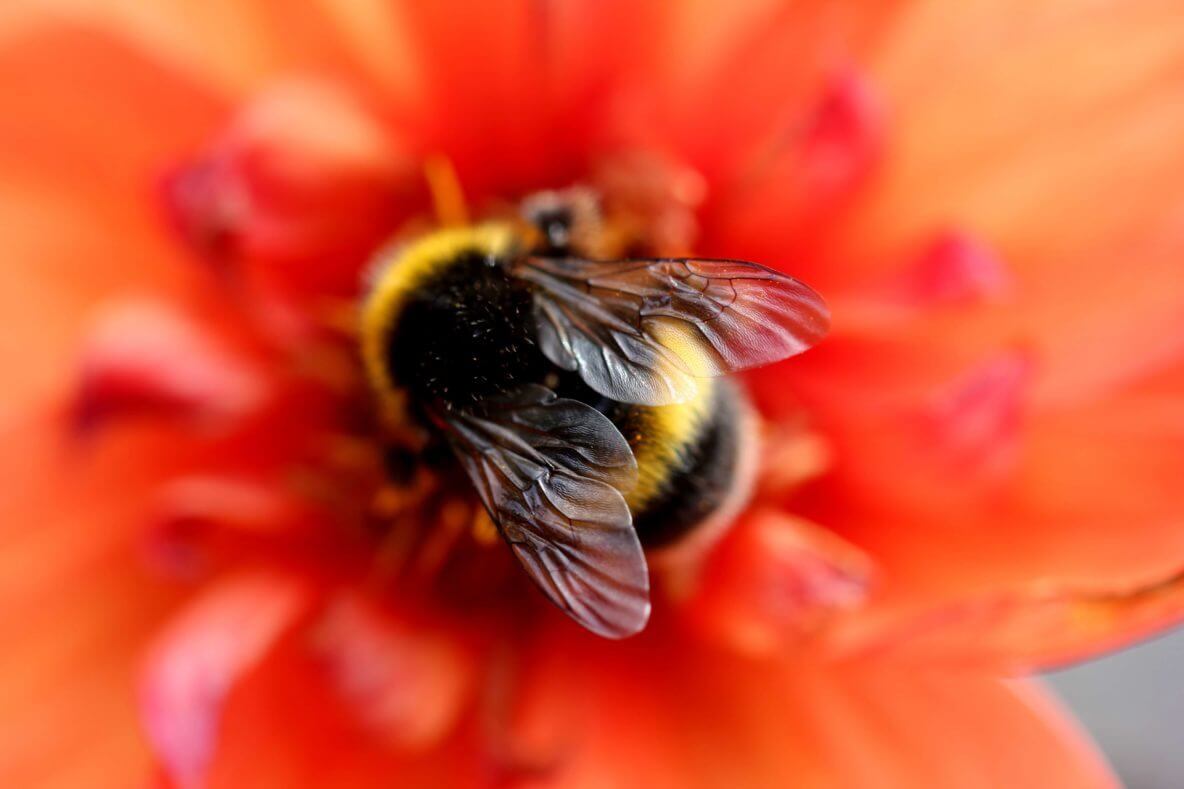
Inhaltsverzeichnis
Healthy eating for beginners - 7 tips
Today I'd like to share some tips and suggestions with you that can help you eat healthier. These tips are aimed at anyone who wants to eat healthier but isn't quite sure how.
I, too, have only been eating mindfully for a few years. Since then, I've learned a lot about what's good for my body – "clean eating" has made the biggest difference in my journey. Eating "clean" means consuming as unprocessed and natural foods as possible, such as vegetables, fruit, healthy fats, and complex carbohydrates. Since then, I've not only been less sick or less tired after eating, but I also feel generally fitter and more alert.
Because this diet is so good for me, I would like to share my experiences and insights. These tips may serve as inspiration or even as a guide to healthy eating. But please don't interpret these tips as the one right option. Just see what resonates with you and what you can and want to implement for yourself.
1. Recognize the process
As a "beginner" or new to nutrition, you should give yourself time and space to figure out what works for you and what's important to you. Often, you're super motivated at first and want to change everything at once. In doing so, you quickly overwhelm yourself or put too much pressure on yourself. If nothing changes, you become demotivated and give up.
So please don't think you have to change everything from one day to the next. You don't have to immediately cross all your favorite sweets off your list. You don't have to cook meals for the entire week or go vegan starting tomorrow. It's a process, and you should embrace it as such. Embark on a journey where you'll learn new things and gradually establish new habits.
Motivation is great, but allow yourself to slow down a bit…
2. Healthy nutrition is individual
Healthy eating doesn't look the same for everyone—and it doesn't have to. You can eat healthy and be vegan. Or vegetarian. Or a meat eater. You can be a weightlifter or a yogi or a busy mom. You can want to eat three meals a day or six meals a day. We all have different daily routines, needs, and demands. So it's no wonder all our plates look different.
In my opinion, there is no single right diet. We all have to decide for ourselves what we consider most beneficial.
Nevertheless, I think it's sensible to eat unprocessed foods as often as possible. And, of course, to enjoy what we eat.
3. Cook as often as you can
Preparing your own food is one of the easiest ways to eat healthier. You get an overview of the ingredients you're using and can completely decide how your meal will look in the end. You know exactly what you're working with and how your dish is composed.
Again, give yourself time and don't put yourself under pressure. You don't have to cook every meal you eat. It's about getting into the habit of cooking more often than not. So, technically, that's only 51% of the time. .
Cooking from scratch can also help you appreciate your meals more. So, not only are you eating healthier when you cook from scratch, you're also practicing gratitude and mindfulness.

4. Quality over calories
Focusing on calorie counting is often associated with feelings of restriction and deprivation. This is no surprise: Our brain is constantly thinking about getting under a certain number at the end of the day and therefore focuses particularly on what we can't have, what we have to do without, or what we should eat less of. This isn't exactly beneficial or healthy in the long run.
Instead, focus on the quality of the food you eat. Our brain now looks for possibilities and things it can add to our diet that can improve the quality of the food. It no longer operates from a state of scarcity, but from a state of abundance. This allows eating to become more fun and creative again. Our food not only tastes better, but also feels better.
5. Learn to read labels
By learning to read labels, you'll gain an increasingly clear picture of what's going into your body. Look at the ingredient lists of the products you buy. A well-known rule of thumb in this context is: five ingredients or fewer. You should be able to read, recognize, and pronounce all of them.
Of course, supermarket trips take longer at first. But I personally always found it incredibly exciting and enlightening to learn what I was actually eating (and what strange things were in some products?!) ).
I don't want to repeat myself, but here's the thing: You don't have to be "perfect." One step at a time...
6. Avoid highly processed foods and artificial ingredients
This point essentially lies at the heart of "clean eating." It's about enjoying food in its natural, original form whenever possible. You might be wondering: What exactly does "processed food" mean? Where does it begin?
Many healthy foods are easily processed. These include z.BQuinoa, oatmeal, or frozen vegetables. If the ingredient doesn't come directly from the farmer or field, it has been processed in some way. These lightly processed foods are not the ones we're talking about here and should be avoided. These are foods that are highly processed and go through a whole host of different steps, for example, in factories, before they finally end up on our plates.
These products are often saturated with fats, sugar, salt, artificial ingredients, and flavor enhancers, which deprives them of their natural flavor.
Our taste buds also suffer: they become so accustomed to the high concentration of these flavor enhancers that we eventually no longer enjoy natural foods on their own…
So, if you notice that you're eating a lot of highly processed foods, start cutting them down gradually. Your taste buds will eventually "reset," and suddenly fruits will taste sweeter and vegetables less bitter. Incidentally, your cravings for sweeteners and other addictive foods will also diminish surprisingly quickly!
Unprocessed foods are the foundation of clean eating. However, that doesn't mean you can't spice up or spice up your dishes!
7.Follow your hunger
Many of us are accustomed to eating at specific times or following a specific meal plan. As a result, we lose touch with our natural intuition. Our bodies are designed to tell us when it's hungry and needs more energy. So, reconnecting with this incredibly smart system is the most natural thing we can do. This can save us a lot of effort: We no longer have to think so much and actively about what's best to eat and when; we can simply feel it.
This also takes a bit of practice. When you think you're hungry, ask yourself: "Would I eat an apple or a cucumber right now?" If the answer is "yes," you probably really are hungry. If you say no, wait a while and ask yourself the same question again after some time.
Hungry or thirsty?
We often mistake thirst for hunger. So, if you think you're hungry, you can also drink a large glass of water first. You'll find that you feel "full" and better than if you had eaten something instead.
If you often feel super full and tired after eating, my final tip might help: Stop eating when you're full. This may sound obvious, but we're all used to having an abundance of food at our fingertips. A second helping here, a dessert there... Very often, we "overeat" and feel exhausted or even disgusted afterward.
While we eat, our body needs a little time (about 15 minutes) before we feel full. So eat slowly and mindfully. Eat a portion and then wait a while. Here, too, it's about getting more in tune with your body's signals. It's a nice feeling to know what our body needs and what's good for it and when.
If you would like to learn more about healthy eating, mindfulness or sustainability, take a look here over.




























Leave a comment
This site is protected by hCaptcha and the hCaptcha Privacy Policy and Terms of Service apply.